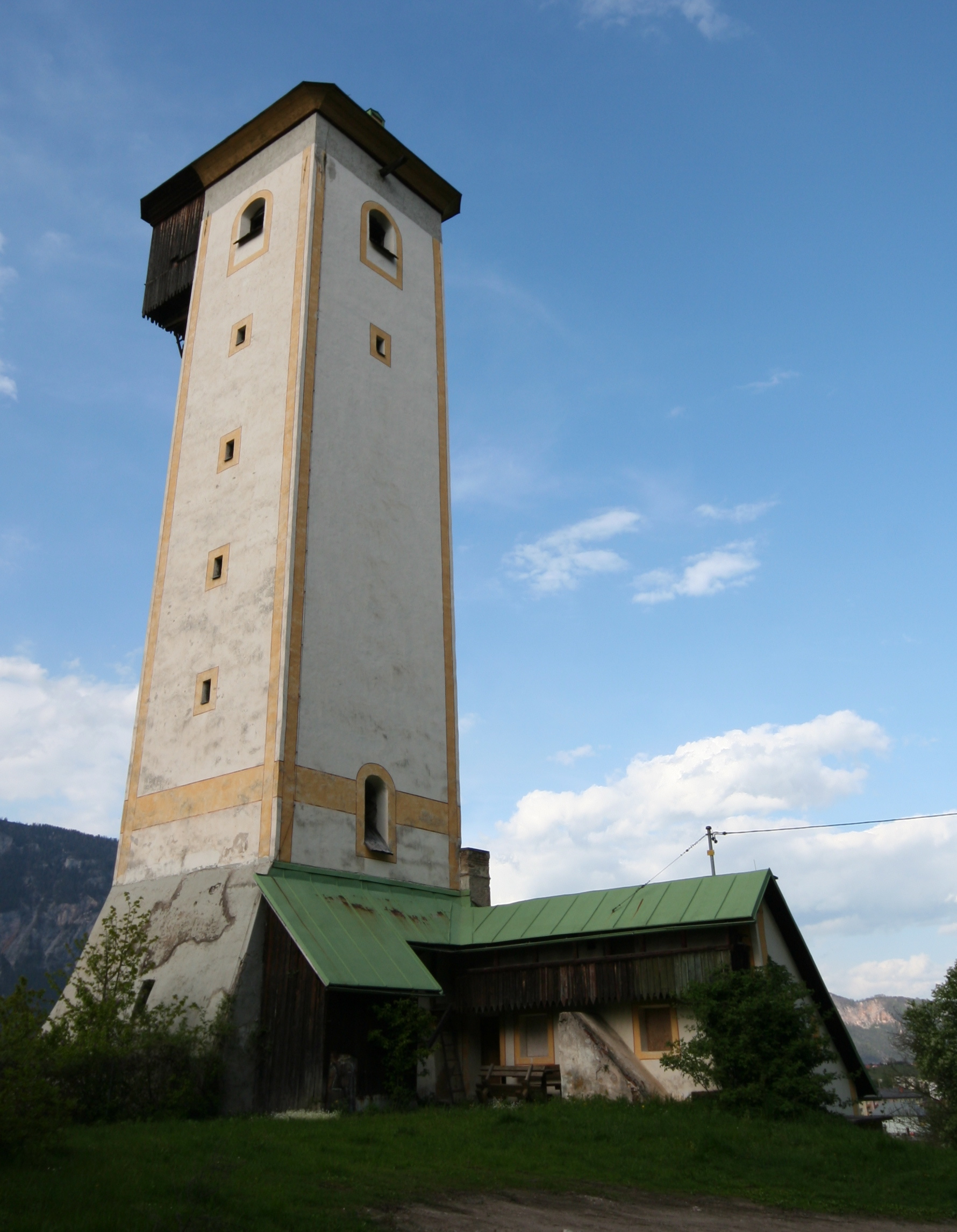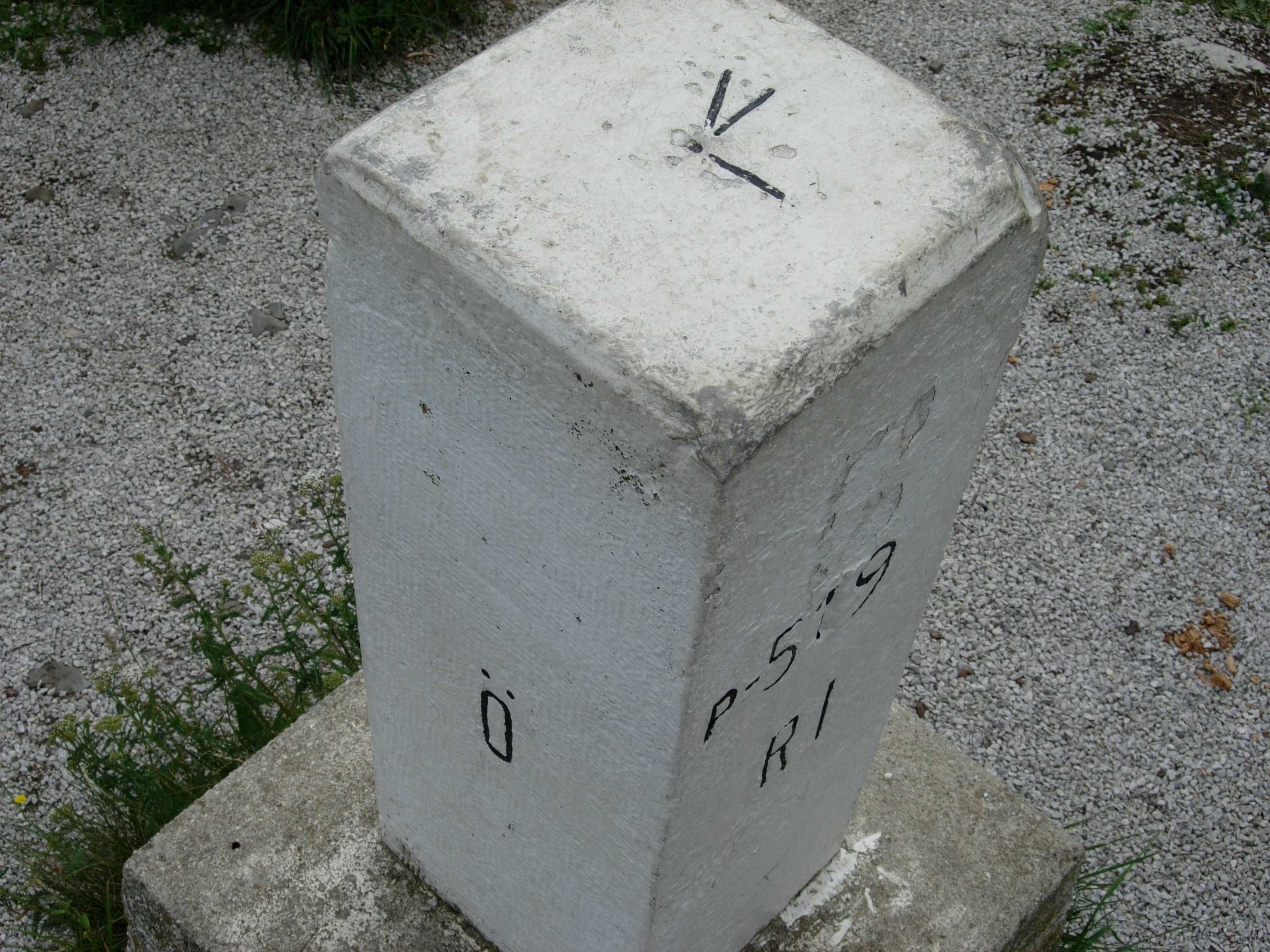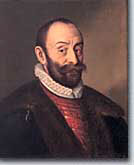|
Fuggerau
The Fuggerau was a mining and ore-smelting facility near Arnoldstein in Carinthia, Austria. It was probably set up by the Fugger family, though the name 'Fugger' was already in evidence in the area before 1495 without any links to that family. History It was set up by the brothers Ulrich, Georg and Jakob in 1495 on lands that they had acquired from Arnoldstein Abbey. This was done with the express permission of the Bishopric of Bamberg, in which the Abbey fell and with whom the Fuggers already had business dealings thanks to their presence in Franconia. The family was granted water rights, landowner rights, fortification rights, all the pledge-service that the abbey owed to the Bishopric, the right to cut down trees at will and to hunt and fish within certain limits, in return for the Abbey being compensated for its pledge-service. These rights were extended in 1496. The Fuggers were also allowed to exercise lower-court rights at the Schloss Rosenheim, though high-court rights ... [...More Info...] [...Related Items...] OR: [Wikipedia] [Google] [Baidu] |
Fuggerau
The Fuggerau was a mining and ore-smelting facility near Arnoldstein in Carinthia, Austria. It was probably set up by the Fugger family, though the name 'Fugger' was already in evidence in the area before 1495 without any links to that family. History It was set up by the brothers Ulrich, Georg and Jakob in 1495 on lands that they had acquired from Arnoldstein Abbey. This was done with the express permission of the Bishopric of Bamberg, in which the Abbey fell and with whom the Fuggers already had business dealings thanks to their presence in Franconia. The family was granted water rights, landowner rights, fortification rights, all the pledge-service that the abbey owed to the Bishopric, the right to cut down trees at will and to hunt and fish within certain limits, in return for the Abbey being compensated for its pledge-service. These rights were extended in 1496. The Fuggers were also allowed to exercise lower-court rights at the Schloss Rosenheim, though high-court rights ... [...More Info...] [...Related Items...] OR: [Wikipedia] [Google] [Baidu] |
Arnoldstein Abbey
Arnoldstein Abbey (''Stift Arnoldstein'') was a Benedictine abbey in Arnoldstein in Carinthia, Austria. Its church was dedicated to St George and first mentioned in historical records in 1316 - its choir, tower, west door and a few buttresses can still be seen. The monastery buildings from the Gothic and 17th century eras were arranged around the church in an oval. History Origins Arnoldstein is named after its founder Arnold, probably a ministerialis of the Prince-Bishopric of Bamberg but not evidenced elsewhere. He first built it between 1085 and 1090. The Bishopric had only been founded in 1007 and to mark his coronation on 10 February 1014 Henry II, Holy Roman Emperor had granted it various possessions in Carinthia, including in the area of what is now the market town of Arnoldstein. Kreuzer 1986, S. 71 Under the Bishop of Bamberg Adalbero of Eppenstein (1053-1057) the Eppsteiner family were the bishopric's vassals. However, they did not give the property back to Adalbert's s ... [...More Info...] [...Related Items...] OR: [Wikipedia] [Google] [Baidu] |
Arnoldstein Valvasor 1688
Arnoldstein ( sl, Podklošter, it, Oristagno) is a market town in the district of Villach-Land in the Austrian state of Carinthia. Geography Location Arnoldstein is located at Austria's southern border between the Carnic Alps and the Karawanken mountain range, near the confluence of the Gailitz (Slovene: ''Ziljica'', Italian: ''Slizza'') and the Gail River (Slovene: ''Zilja'', Italian: ''Zeglia''). The tripoint with Tarvisio in Italy and Kranjska Gora in Slovenia is south of the town at the top of the mountain ''Ofen'' (Slovene: ''Peč'', Italian: ''Monte Forno'') at 1,509m/4,951 ft. Today there is a marker at this location. Arnoldstein can be reached via the A2 Süd Autobahn from Vienna and the parallel Austrian Southern Railway (''Rudolfsbahn''), running from Klagenfurt to the Italian border, where it is continued by the Italian '' Pontebbana'' line to Udine. Subdivision Arnoldstein is divided into six Katastralgemeinden: Arnoldstein (''Podklošter''), Hart (''Loči ... [...More Info...] [...Related Items...] OR: [Wikipedia] [Google] [Baidu] |
Arnoldstein
Arnoldstein ( sl, Podklošter, it, Oristagno) is a market town in the district of Villach-Land in the Austrian state of Carinthia. Geography Location Arnoldstein is located at Austria's southern border between the Carnic Alps and the Karawanken mountain range, near the confluence of the Gailitz (Slovene: ''Ziljica'', Italian: ''Slizza'') and the Gail River (Slovene: ''Zilja'', Italian: ''Zeglia''). The tripoint with Tarvisio in Italy and Kranjska Gora in Slovenia is south of the town at the top of the mountain ''Ofen'' (Slovene: ''Peč'', Italian: ''Monte Forno'') at 1,509m/4,951 ft. Today there is a marker at this location. Arnoldstein can be reached via the A2 Süd Autobahn from Vienna and the parallel Austrian Southern Railway (''Rudolfsbahn''), running from Klagenfurt to the Italian border, where it is continued by the Italian '' Pontebbana'' line to Udine. Subdivision Arnoldstein is divided into six Katastralgemeinden: Arnoldstein (''Podklošter''), Hart (''Ločil ... [...More Info...] [...Related Items...] OR: [Wikipedia] [Google] [Baidu] |
Fugger
The House of Fugger () is a German upper bourgeois family that was historically a prominent group of European bankers, members of the fifteenth- and sixteenth-century mercantile patriciate of Augsburg, international mercantile bankers, and venture capitalists. Alongside the Welser family, the Fugger family controlled much of the European economy in the sixteenth century and accumulated enormous wealth. The Fuggers held a near monopoly on the European copper market. This banking family replaced the Medici family, who influenced all of Europe during the Renaissance. The Fuggers took over many of the Medicis' assets and their political power and influence. They were closely affiliated with the House of Habsburg whose rise to world power they financed. Unlike the citizenry of their hometown and most other trading patricians of German free imperial cities, such as the Tuchers, they never converted to Lutheranism, as presented in the Augsburg Confession, but rather remained with the ... [...More Info...] [...Related Items...] OR: [Wikipedia] [Google] [Baidu] |
Schwaz
Schwaz () is a city in the Austrian state of Tyrol. It is the administrative center of the Schwaz district. Schwaz is located in the lower Inn valley. Location Schwaz lies in the middle of the Lower Inn Valley at the foot of the Kellerjoch and Eiblschrofen mountains. It is located approximately east of Innsbruck. The city covers an area of . Neighbouring communities include: Buch bei Jenbach, Fügenberg, Gallzein, Pill, Stans, and Vomp. History The Counts of Tyrol guarded Schwaz from nearby Burg Freundsberg. At the town's height during the 15th and 16th centuries, it was an important silver mining center, providing mineral wealth for both the Fugger banking family and, through them, for the Austrian emperors. During this period, its population of about 20,000 inhabitants made it the second largest city in the Austrian Empire, after Vienna.Chizzali. Tyrol: Impressions of Tyrol. (Innsbruck: Alpina Printers and Publishers), p. 28 Schwaz received its city rights in 1898 by Emp ... [...More Info...] [...Related Items...] OR: [Wikipedia] [Google] [Baidu] |
Factor (agent)
A factor is a type of trader who receives and sells goods on commission, called factorage. A factor is a mercantile fiduciary transacting business in his own name and not disclosing his principal. A factor differs from a commission merchant in that a factor takes possession of goods (or documents of title representing goods, such as a bill of lading) on consignment, but a commission merchant sells goods not in his possession on the basis of samples. Most modern factor business is in the textile field, but factors are also used to a great extent in the shoe, furniture, hardware, and other industries, and the trade areas in which factors operate have increased. In the United Kingdom, most factors fall within the definition of a mercantile agent under the Factors Act 1889 and therefore have the powers of such. A factor has a possessory lien over the consigned goods that covers any claims against the principal arising out of the factor's activity. A debt factor, whether a perso ... [...More Info...] [...Related Items...] OR: [Wikipedia] [Google] [Baidu] |
War Of The League Of Cambrai
The War of the League of Cambrai, sometimes known as the War of the Holy League and several other names, was fought from February 1508 to December 1516 as part of the Italian Wars of 1494–1559. The main participants of the war, who fought for its entire duration, were France, the Papal States, and the Republic of Venice; they were joined at various times by nearly every significant power in Western Europe, including Spain, the Holy Roman Empire, England, the Duchy of Milan, the Republic of Florence, the Duchy of Ferrara, and the Swiss. The war started with the ''Italienzug'' of Maximilian I, King of the Romans, crossing into Venetian territory in February 1508 with his army on the way to be crowned Holy Roman Emperor by the Pope in Rome. Meanwhile, Pope Julius II, intending to curb Venetian influence in northern Italy, brought together the League of Cambrai — an anti-Venetian alliance consisting of him, Maximilian I, Louis XII of France, and Ferdinand II of Aragon ... [...More Info...] [...Related Items...] OR: [Wikipedia] [Google] [Baidu] |
Hans Fugger
Hans Fugger ''von der Lilie'', full name ''Hans, Freiherr Fugger, Herr zu Kirchheim, Glött, Mickhausen, Stettenfels und Schmiechen'', (4 September 1531 – 19 April 1598; buried in Kirchheim in Schwaben) was a German arts patron, businessman and politician of the Fugger family. Life He was the second son of Anton Fugger (1493–1560) and Anna Rehlinger. As befitted the family's new standing, he and his brothers Marx (1529–1597), Hieronimus (1533–1573) and Jakob (1542–1598) received a cultural and philosophical education as well as a mercantile one. Throughout his life Hans served the family's commercial interests in different areas, ranging from the Netherlands to Spain to his native Augsburg. After his father Anton's death in 1560 he and his brothers managed the now-substantial family estates and business together. In 1573 the brothers divided the business up between them, with Hans getting (among others) the lands in Kirchheim, Glött, Burg Stettenfels and Duttenstei ... [...More Info...] [...Related Items...] OR: [Wikipedia] [Google] [Baidu] |
Marx Fugger
Markus Fugger (Marx Fugger) ''von der Lilie'' (14 February 1529 – 18 June 1597) was a German politician and businessman of the Fugger family. He was the eldest son of Anton Fugger. He achieved several high offices - chamberlain to Archduke Ernest of Austria, Kammerpräsident, member of the kurbayrische (Bavarian) council, Pfleger ( reeve) in the Landshut, and city-pfleger in Augsburg. Life On his father's death in 1560, he and his brothers Hans and Jakob jointly managed their father's business. When they split up the business in 1575, Markus took its northern division. With other family members, he took over part of the Fuggerhäuser in Augsburg. Similarly, on his father's death, as eldest son Markus led the newly founded Marx Fugger and Brothers Firm (Firma Marx Fugger und Gebrüder) for 30 years. He was interested in church history, acted as a patron to artists and collected books and antiquities, taking on Nikolaus Juvenel as a portrait painter in Augsburg. He organised sum ... [...More Info...] [...Related Items...] OR: [Wikipedia] [Google] [Baidu] |
Hundredweight
The hundredweight (abbreviation: cwt), formerly also known as the centum weight or quintal, is a British imperial and US customary unit of weight or mass. Its value differs between the US and British imperial systems. The two values are distinguished in American English as the "short" and "long" hundredweight and in British English as the "cental" and the "imperial hundredweight". * The short hundredweight or cental of is used in the United States. * The long or imperial hundredweight of 8 stone or is defined in the imperial system. Under both conventions, there are 20 hundredweight in a ton, producing a " short ton" of 2,000 pounds and a " long ton" of 2,240 pounds. History The hundredweight has had many values. In England in around 1300, different "hundreds" (''centum'' in Medieval Latin) were defined. The Weights and Measures Act 1835 formally established the present imperial hundredweight of 112 lb. The United States and Canada came to use the ter ... [...More Info...] [...Related Items...] OR: [Wikipedia] [Google] [Baidu] |





